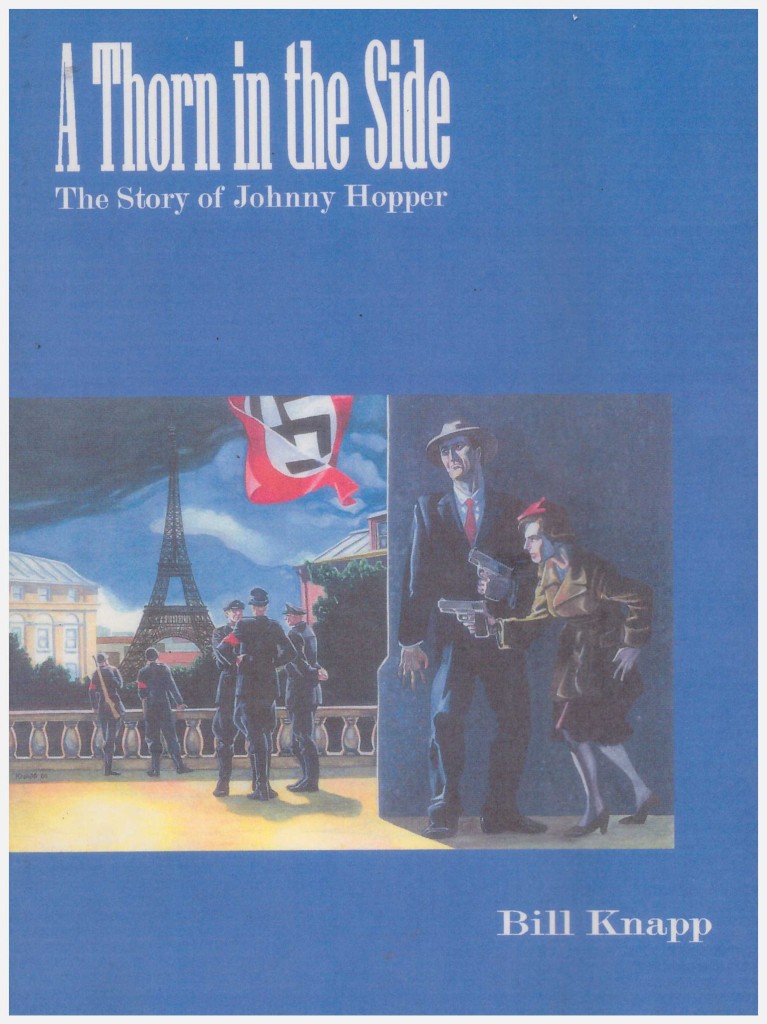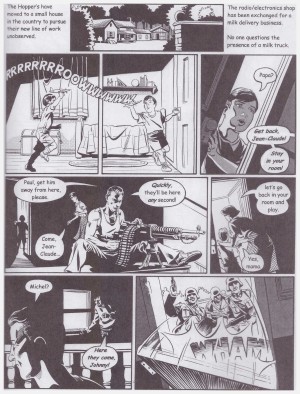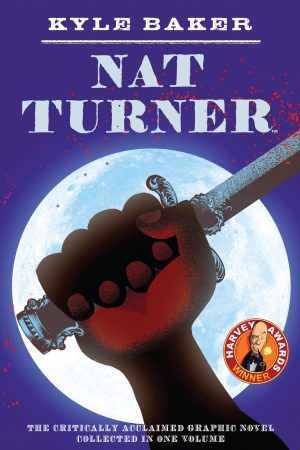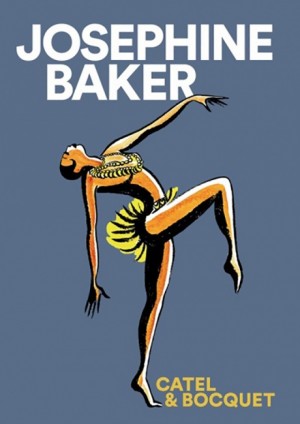Review by Ian Keogh
The global conflict of World War II resulted in so many remarkable stories that many remain known only to family members, if at all. Such is the case with Johnny Hopper, celebrated in a single web page, taken from the Smithsonian Magazine, and Bill Knapp’s sympathetic graphic novel biography relies heavily on that single source in the absence of others.
As Knapp relates, Hopper was an astonishing man, one shaped by the requirements of the times into becoming something that otherwise may have remained concealed. Although British born, Hopper was married and living in Caen when the Nazis invaded France in 1940. Not one to suffer the yoke of tyranny gladly, Hopper carries out an audacious symbolic gesture that angers French collaborators, and results in the necessity of he and his wife fleeing to occupied Paris.
Hopper and Paulette build close ties with the resistance based in Paris, and theirs becomes a furtive existence of daring escapades and missions. Yet as Knapp opens the book with a scene of Hopper in Dachau concentration camp, there’s a sense of foreboding throughout. Hopper is first placed in a work camp, and then transferred to Dachau.
A precise attention to detail runs through Knapp’s unfurling of Hopper’s experiences. He slips in a wealth of required historical context in an unobtrusive manner while keeping his primary narrative in motion, and copes well with the difficult task of putting words in the mouths of real people. Hopper is portrayed from the start as a man of honour and principle, and these characteristics inform his reactions, yet he’s also cautious enough to prioritise survival.
Knapp’s art is expertly constructed in the service of the story, his layouts varied and coping well whenever there’s a prolonged conversation sequence. His panels are detailed and expressive, and despite referencing horrific events they’re never gratuitously explicit in the service of reader retribution.
The worst incident of Hopper’s wartime life is only revealed toward the end of the book, and it’s tragic in the most personal fashion. As his wartime experiences furnished enough incredible incidents to populate several films at times it’s difficult to distance ourselves and not consider them in fictional terms. This event drags us back to reality. There’s a brilliant epilogue as well, set in 1980.
Sadly, in his own way Knapp is as obscure in comics as Hopper is to the wider world, this despite a noteworthy superhero series, The Furies, never collected, and a further slim graphic novel titled Faith. It’s a loss to comics that this was Knapp’s final project. He’s now a fine artist whose work can be seen here.





